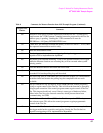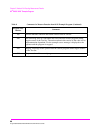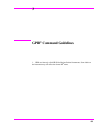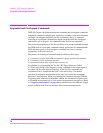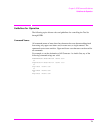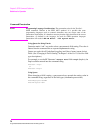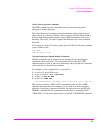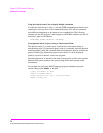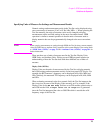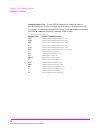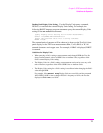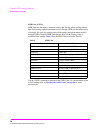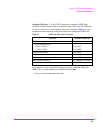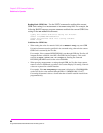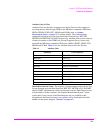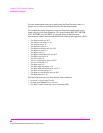
75
Chapter 3, GPIB Command Guidelines
Guidelines for Operation
Specifying Units-of-Measure for Settings and Measurement Results
Numeric settings and measurement results in the Test Set can be displayed using
one or more units-of-measure (V, mV, mV, Hz, kHz, MHz…). When operating the
Test Set manually, the units-of-measure can be easily changed to display
measurement results and field settings in the most convenient format. GPIB
operation is similar to manual operation in that the units-of-measure used to
display numeric data can be programmatically changed to the most convenient
form.
NOTE: When querying measurements or settings through GPIB, the Test Set always returns numeric
values in GPIB Units or Attribute Units, regardless of the current Display Units setting. Refer
to “GPIB Units (UNITs)” on page 78 and “Attribute Units (AUNits)” on page 81 for
further information.
There are three sets of units-of-measure used in the Test Set: Display Units,
GPIB Units, and Attribute Units. Writing correct GPIB programs requires an
understanding of how the Test Set deals with these different sets of units-of-
measure.
Display Units (DUNits)
Display Units are the units-of-measure used by the Test Set to display numeric
data (field settings and measurement results) on the front-panel CRT display. For
example, the RF Generator’s frequency can be displayed in Hz, kHz, MHz and
GHz. Similarly, the measured TX Frequency can be displayed in Hz, kHz, MHz
and GHz.
When evaluating an entered value for a numeric field, the Test Set interprets the
data it receives in terms of the Display Units currently set. For example, if the
Display Units for the
RF Gen Freq field are set to GHz and the operator tries to
enter 500 into the field, an
Input value out of range error is generated
since the Test Set interpreted the value as 500 GHz which is outside the valid
frequency range of the Test Set.



